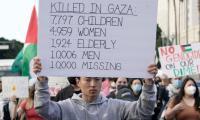The two-year anniversary of the 2018 elections is a time for sober reflection. The PTI came to power after over two decades on the periphery of mainstream politics.
In the 24 months since the election that delivered the office of the prime minister to Imran Khan, a lot has been said about the failures of this government. But what has this government been able to achieve? I believe enough to potentially seal a legacy for PM Khan amongst the pantheon of Pakistani leaders that have left Pakistan better off than when they got it. Before I explain what and how, a reminder: this pantheon includes every major political leader that has risen to high office in post partition Pakistan (1971).
Shaheed Zulfiqar Ali Bhutto conceived and delivered the idea of Pakistan as a regional and global power. This was no ordinary feat for a country that had experienced a bloody and traumatic vivisection in December 1971. By the time General Ziaul Haq had taken power, unconstitutionally Pakistan was already poised to be a pivot for global power. That legacy, for all the legitimate bitterness and damage it may have caused, is also a source of global relevance for Pakistan that, in strict conditions, can and should be leveraged for ordinary Pakistanis. The signature moment of Bhutto’s service to Pakistan came in May of 1998, almost two decades after he had been executed, when Pakistan declared itself a nuclear power.
Shaheed Mohtarma Benazir Bhutto and her husband former President Asif Ali Zardari (a continuum of leaders that we often think of inaccurately as separate) established a coherent and enduring narrative about democratic values. How impactful and powerful is this narrative? The idea of parliamentary democracy and federalism is innate to the identity of every would-be democrat to this day, nearly thirteen years since she was assassinated, and over seven years since the PPP last governed Pakistan.
The most important macro-level debate in the country is around federalism and the ability of Pakistan to be governed capably given the configuration of the republic. For better or worse, and despite the inescapable fingerprints of Nawaz Sharif on Pakistan’s brand democracy, it is the Bhutto-Zardaris that are correctly the face, the spirit and the vibe of democratic values in the country. The signature moment of their service to Pakistan came in 2010 with the passage of the 18th Amendment.
Nawaz Sharif altered the character of Pakistan’s economy, and the scope of imagination about what Pakistan could be. He presided over the transformation of Punjab: once a dusty road, agrarian behemoth, to one that aspires to be urban, mechanized, digital and globally competitive. Every time he was in office, he substantially altered the net capacity of the country, with roads, highways, and power generation capacity. He established economic growth and petit bourgeois ambition as national virtues.
His post 2008 come-to-democracy consciousness is certainly worthy of praise, but it does not encompass his most impactful contributions to nation-building. For that we have a rich expanse of symbols that shape modern Pakistan: from the M2 motorway that he inaugurated in 1997, to the Lahore Metro that his brother inaugurated in 2012, to the entire framework of the Pakistan-end of the Belt and Road Initiative, or the China Pakistan Economic Corridor, to the National Electric Grid, which he renewed by almost doubling capacity between 2013 and 2018.
All three leadership groups had multiple tenures leading the country, no matter that almost all of them (save Zardari’s presidency), were cut short by exogenous factors. In 24 short months, I believe Prime Minister Imran Khan has already laid the foundation for the legacy that may define him and his contribution to Pakistan, in the years to come: a universal basic income modelled on the Ehsaas Emergency Cash (EEC) programme.
In less than two years, PM Khan has meticulously guarded and protected the Benazir Income Support Programme or BISP and created a programmatic umbrella over it that is called Ehsaas. He has established an administrative home for this programme called the Poverty Alleviation and Social Security Division. He has identified, hired and protected a leader for the programme in the person of Dr Sania Nishtar, and when the moment of truth arrived, and Covid-19 struck, he correctly focused on the economic impact it would have on the poor, and fast-tracked cash grants for those poor that are now the bedrock of what can and should grow to become his enduring legacy, the EEC.
The EEC represents the Islamic Republic’s moment of reckoning with the Pakistani people. This relationship, mostly tenuous and uncertain in over seventy years, has rarely been tested as it has been and will be during the Covid-19 and post Covid-19 era. Of course, like every defining legacy, the Ehsaas programme would not exist without the BISP. Due credit for the BISP belongs not only to the PPP and president Zardari and PM Yusuf Raza Gilani, but also to PM Nawaz Sharif. But today, after having disbursed the largest ever unconditional cash grant to the largest ever cohort of recipients, Pakistan is at the precipice of a redefined social contract.
That this has been achieved during a period of intense political dysfunction, repression of voice and political vindictiveness of a quality and depth that matches any in Pakistan’s history is all the more incredible. But it may speak to the enduring and universal nature of Pakistani poverty that politicians will rarely oppose a government that is giving away cash to the people that need it most.
As of July 25, 2020, the EEC has delivered Rs12,000 each to over 13 million households. This represents a more than two fold expansion of the original BISP or Kifaalat programme of roughly five million beneficiaries. That Dr Nishtar and her team enabled this expansion in a period of less than three months since the first grants started to be processed speaks to the incredible capacity of the Pakistani state. It also speaks to its tragically untapped potential.
And this is where PM Khan’s long-term legacy comes in. The total allocations for BISP/Ehsaas grants in this year’s budget are not going to be enough to even double up on the original EEC.
What the poor actually need, as Dr Nishtar and her colleagues at BISP and PASS Division understand, are regular injections of cash that supplement their ability to purchase and consume food. If the system were to cap the total number of new recipients at 14 million, a number that is fast approaching, the total cost of a Rs12,000 grant would balloon to Rs168 billion. To afford this kind of a grant each month would require an annual allocation of over Rs2 trillion – nearly impossible for now.
But what if we treat the EEC as the one-time grant it is, and instead set a new grant, at Rs24,000 per annum, payable in two instalments for these same 14 million households? This keeps the size of payment the same as the EEC, and at twice a year, it may be regular enough to matter. This would require only Rs.336 billion. This is not loose change. It would require substantial accounting and re-prioritization. But it is within the realm of the possible.
Remember: the ‘average’ Pakistani is in her early twenties, and lives in a household with a monthly income of Rs35,110. The 14 million households the EEC is targeting all fall substantially below this threshold. Cash grants to these households is not ‘welfare’ or charity. It is their right, as citizens, to be able to afford meals for their children. As PM Khan thinks about how he wants to be remembered, he should focus on his strength: compassion (and Dr Nishtar’s singular focus and capability to bring it to life).
Everything else this government is doing and will do, will be forgotten (though not forgiven). But a renewed and reformed social contract between poor Pakistanis and the Islamic Republic? That’s transformational. And it is now within reach.
The writer is an analyst and commentator.
Earth Day protests carry a vital message that is relevant 365 days a year. — AFP File Earth Day is celebrated every...
People walk along a market in Lahore on May 17, 2023. — AFP/FileMany of us had hoped that the general election...
Packs of freshly printed $20 notes are processed for bundling and packaging at the US Treasury's Bureau of Engraving...
People stand in line up as election officials check their ballot papers during voting general election at a polling...
Women show their voter identity cards as they stand in a queue before casting their votes in Agartala. — PTIThe 18th...
Former prime minister Imran Khan. — Instagram/ imrankhan.ptiAn old saying has it that “when you dance with the...







